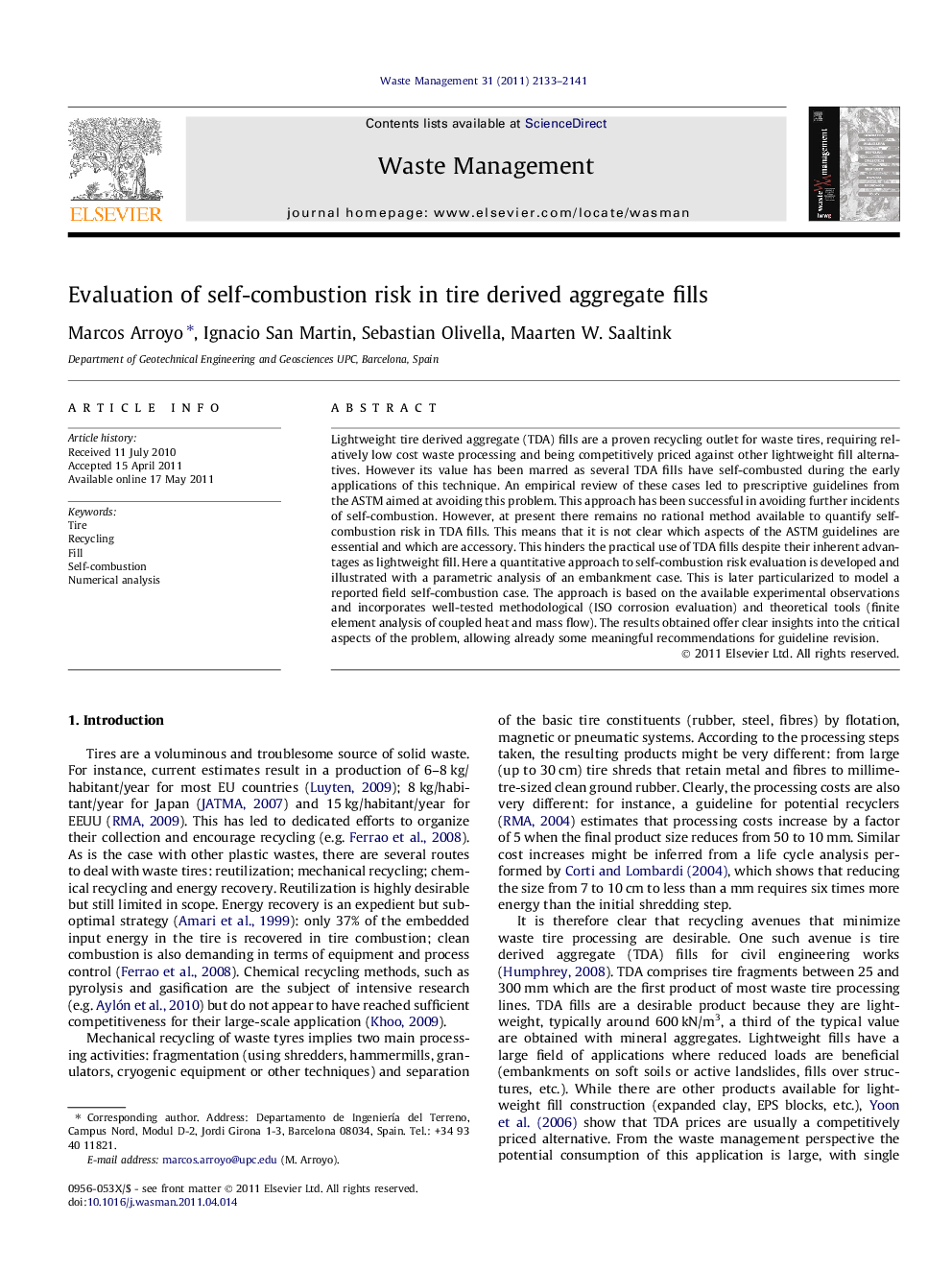| Article ID | Journal | Published Year | Pages | File Type |
|---|---|---|---|---|
| 4472389 | Waste Management | 2011 | 9 Pages |
Lightweight tire derived aggregate (TDA) fills are a proven recycling outlet for waste tires, requiring relatively low cost waste processing and being competitively priced against other lightweight fill alternatives. However its value has been marred as several TDA fills have self-combusted during the early applications of this technique. An empirical review of these cases led to prescriptive guidelines from the ASTM aimed at avoiding this problem. This approach has been successful in avoiding further incidents of self-combustion. However, at present there remains no rational method available to quantify self-combustion risk in TDA fills. This means that it is not clear which aspects of the ASTM guidelines are essential and which are accessory. This hinders the practical use of TDA fills despite their inherent advantages as lightweight fill. Here a quantitative approach to self-combustion risk evaluation is developed and illustrated with a parametric analysis of an embankment case. This is later particularized to model a reported field self-combustion case. The approach is based on the available experimental observations and incorporates well-tested methodological (ISO corrosion evaluation) and theoretical tools (finite element analysis of coupled heat and mass flow). The results obtained offer clear insights into the critical aspects of the problem, allowing already some meaningful recommendations for guideline revision.
► Steel oxidation is the main source of internal heat in TDA fills. ► Heat release rate follows from corrosion rate and corrodible steel concentration. ► Heat transfer in the TDA fill takes place by convection as well as by conduction. ► Numerical modelling of the problem is proposed and validated against field records. ► TDA self-heating is avoidable by controlling the amount of corrodible steel.
